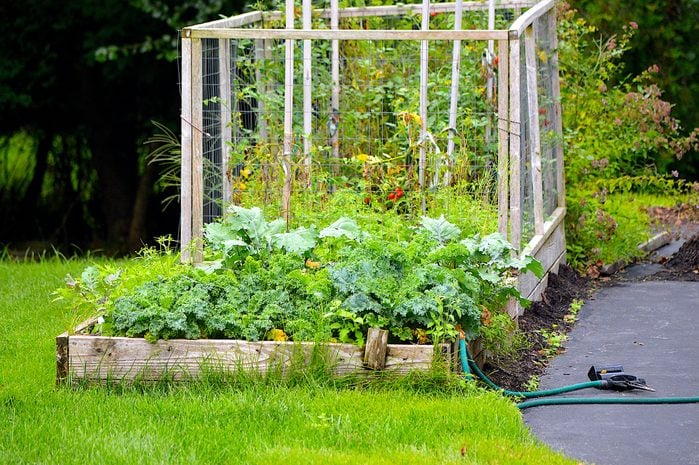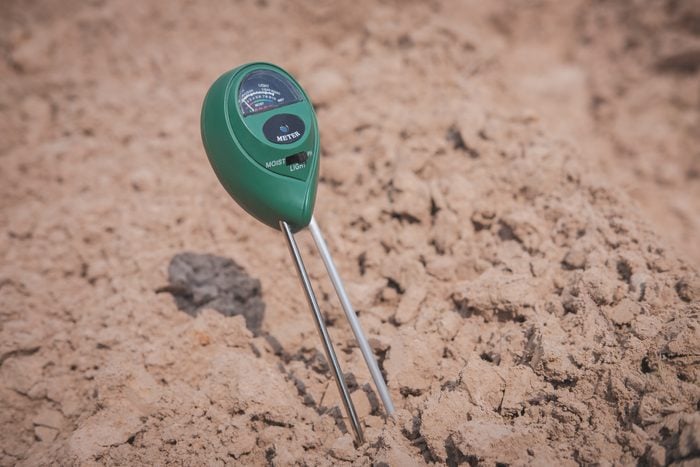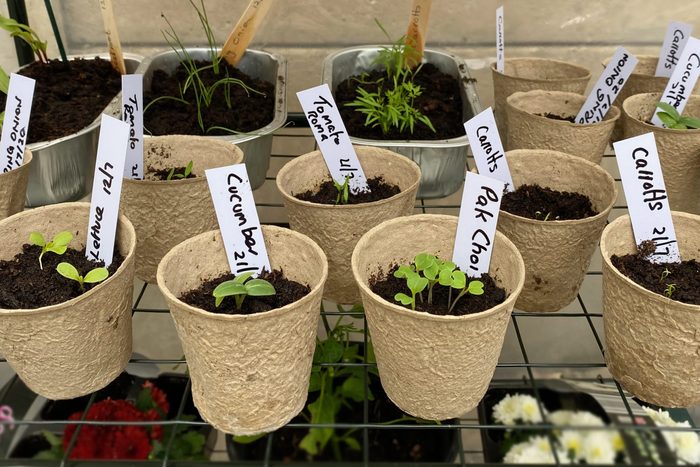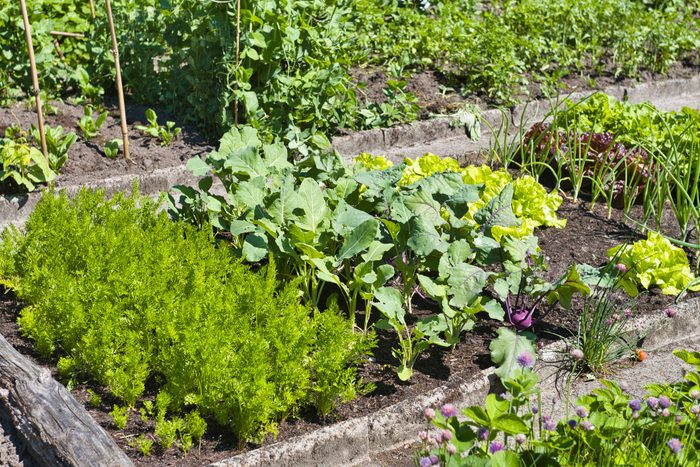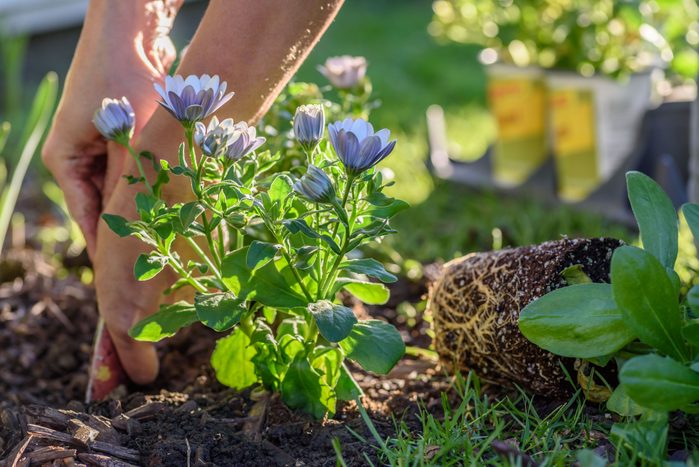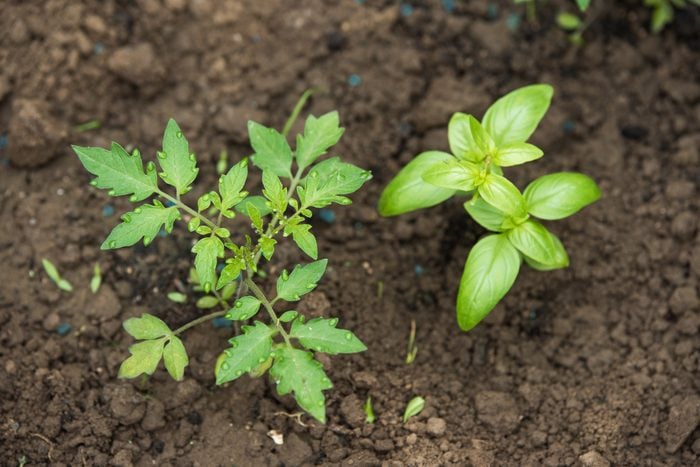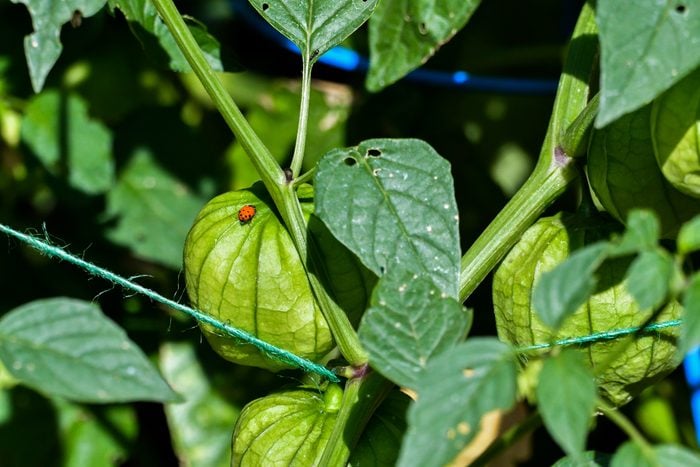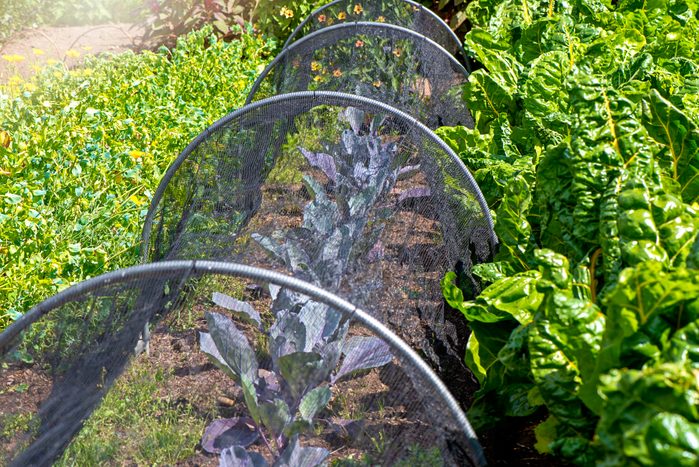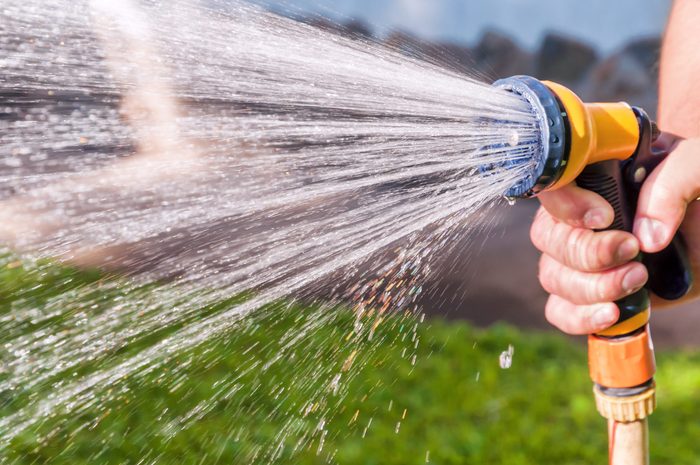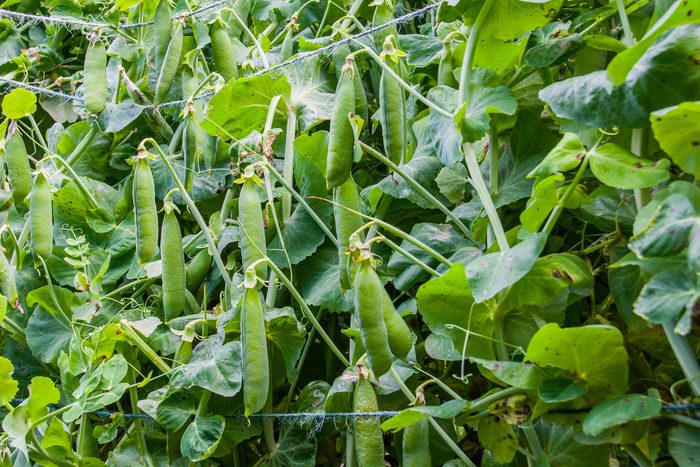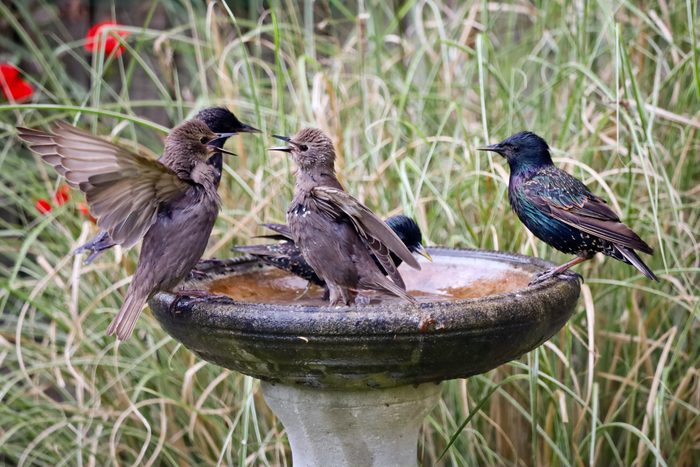Pick a Happy Location
Before designing your garden, observe the amount of sunlight in your yard. Choose a sunny spot with easy access to a rain barrel or hose.
Then decide if you want to build raised beds or sow directly into the ground. Both have benefits. But if the soil has been heavily altered by construction or contamination, a raised bed might make more sense.
“Then you can curate your soil to be the ideal growing medium for your plants and know exactly what is in it,” says Carrie Spoonemore of Park Seed and co-creator of From Seed to Spoon.
Know Your Soil
Poor soil stresses plants, making them more vulnerable to diseases and infestations. If you’re not building raised beds, get a soil test to see what amendments you might need to balance the nutrients and pH level. And try not to over-till the soil.
If you’re going with raised beds, decide what ingredients you want in your soil. “For me, my perfect recipe is compost, coconut coir and vermiculite, all ingredients you can find at your local nursery,” says Spoonemore. Either way, start a compost pile, which will eventually turn into prime natural fertilizer for your garden.
Choose Your Veggies
Decide what vegetables and herbs you want to grow, and buy organic and heirloom seeds and seedlings whenever possible.
“Focus on the source of the seeds,” says Heather Andrews, aka the Thoughtful Gardener. “It’s really ideal to get seeds from your local area because they have been growing in your conditions and are more likely to survive.”
Some trusted vegetable seed outlets include Park Seed and Botanical Interests. If you can’t find organic seeds, at least make sure what you do get doesn’t have added chemicals like neonicotinoids.
Plot It Out
“An efficient plan is needed to get the most out of your garden and to know what the best uses of your crop will be,” says Spoonemore. Square-foot gardening, marking square-foot plots with twine and plant stakes, is one simple method for optimizing your garden. But it will take some trial and error to find the spot where each plant thrives.
And don’t feel like you have to plant in straight rows. “Mix up your planting, because you’re not a farm, right?” Andrews says.
Add Flowers and Natives
Flowers and native plants are not just for show. Plant diversity attracts a range of insects and other creatures to optimize your yield. Plus, it keep the ecosystem in balance so your plants can withstand diseases and blights without chemical pesticides or herbicides.
A range of pollinator-targeting flowers, which you can find from local growers through the National Wildlife Federation, is especially helpful.
Plant Partners
Companion planting, or putting vegetables and flowers with symbiotic relationships near one another, gives your garden resilience and confuses potential predators.
“This step is key to a successful organic garden,” says Spoonemore. “Insects such as ladybugs, parasitic wasps and hoverflies keep pests under control while bees and butterflies pollinate your blooms for a successful yield.”
Plant tomato and basil next to each other, or borage next to cucumbers. “The bee visits the blue of the borage, and then bounces over to my cucumbers and pollinates them, so I get more cucumbers,” says Andrews.
Don’t Panic
Bugs and diseases will pop up in your garden from time to time. But if you’ve invited the good guys in with a biodiverse range of plants, especially native companions, there’s a good chance nature will work it out in your favor.
“At one point my milkweed got covered in mold, which is typical when you have lots of aphids,” says Andrews. “Milkweed sends out a chemical that says I’m under stress, I need help, and then the cavalry comes. Tons and tons of ladybugs showed up, and within three days it looked like someone had polished the leaves clean.
“So I have a tendency to leave things alone when they’re going wrong in the garden and see what happens.”
Monitor Pests
If a pest problem doesn’t work itself out naturally, or if you know you’re in a spot prone to particular infestations or diseases, it’s good to be proactive as well. Check the garden often for invasions, because they’re easier to stop when they’re new.
Besides seeing pests or their eggs under the leaves or on stalks, signs something is awry include browning or yellowing leaves, white patches or curling. Netting can keep some insects at bay during seasons when they may be more active. If you see detrimental beetles and such, handpick them or knock them into a bucket of soapy water instead of using pesticides.
But before doing that, get to know your bugs, because you don’t want to hurt beneficial insects or disrupt a healthy ecosystem in your garden.
Nourish Plants
Proper timing with seeding and watering plants is another key to their fortitude. Apps like From Seed to Spoon can customize dates for starting your various seeds, as well as selecting vegetables that benefit specific health conditions.
And don’t forget to water. “To keep your seedlings happy, deep watering less often is more beneficial than frequent light watering,” says Spoonemore. “This watering method will force plants to grow longer and stronger roots. And keep in mind the best time to water is in the early morning, so plants can soak up water before the heat of the afternoon.”
Overwinter Wisely
Sowing a cover crop in the fall like peas, radishes and oats helps organic garden maintenance. “Peas add nitrogen to the soil, radishes will help to aerate, and the greens have soil-cleansing properties,” says Spoonemore. “In the spring, these cover crops can be turned over to add organic matter back into the soil, doubling as a natural fertilizer.”
Some gardeners also like to rotate crop placement. This prevents nutrient depletion in the soil, as well as some diseases and infestations.
Make It an Ecosystem
Eventually, your enthusiasm for your organic garden may spill over into your yard. When that happens, plant native bushes and trees, try keeping a few brush and leaf piles around, and add a water fixture like a bird bath. Now you’ve given creatures places to shelter, raise their young and find nourishment — a true ecosystem.
When you’ve reached that point, consider certifying your yard as a wildlife refuge. The result might just be contagious enough to spread throughout the neighborhood.

